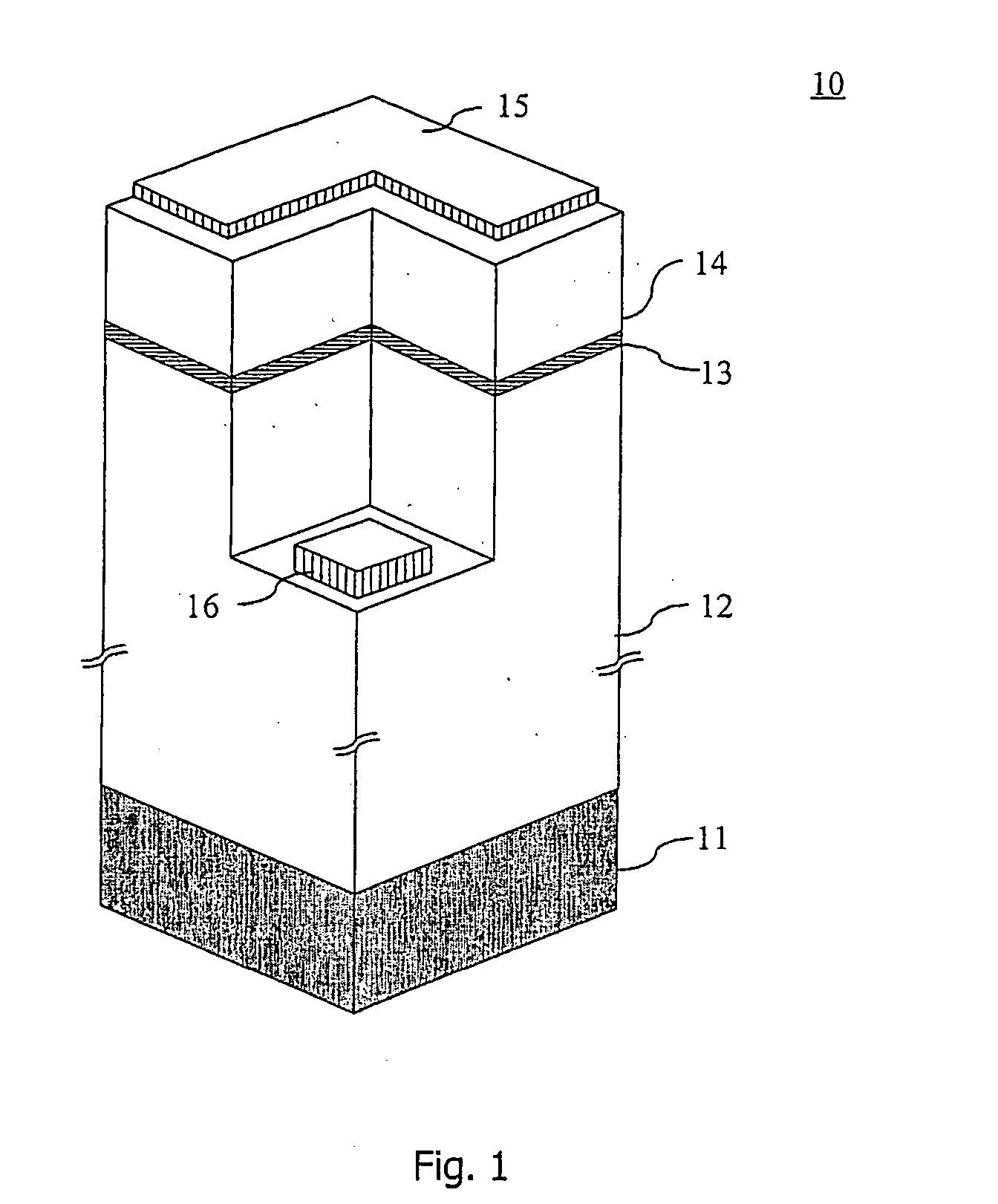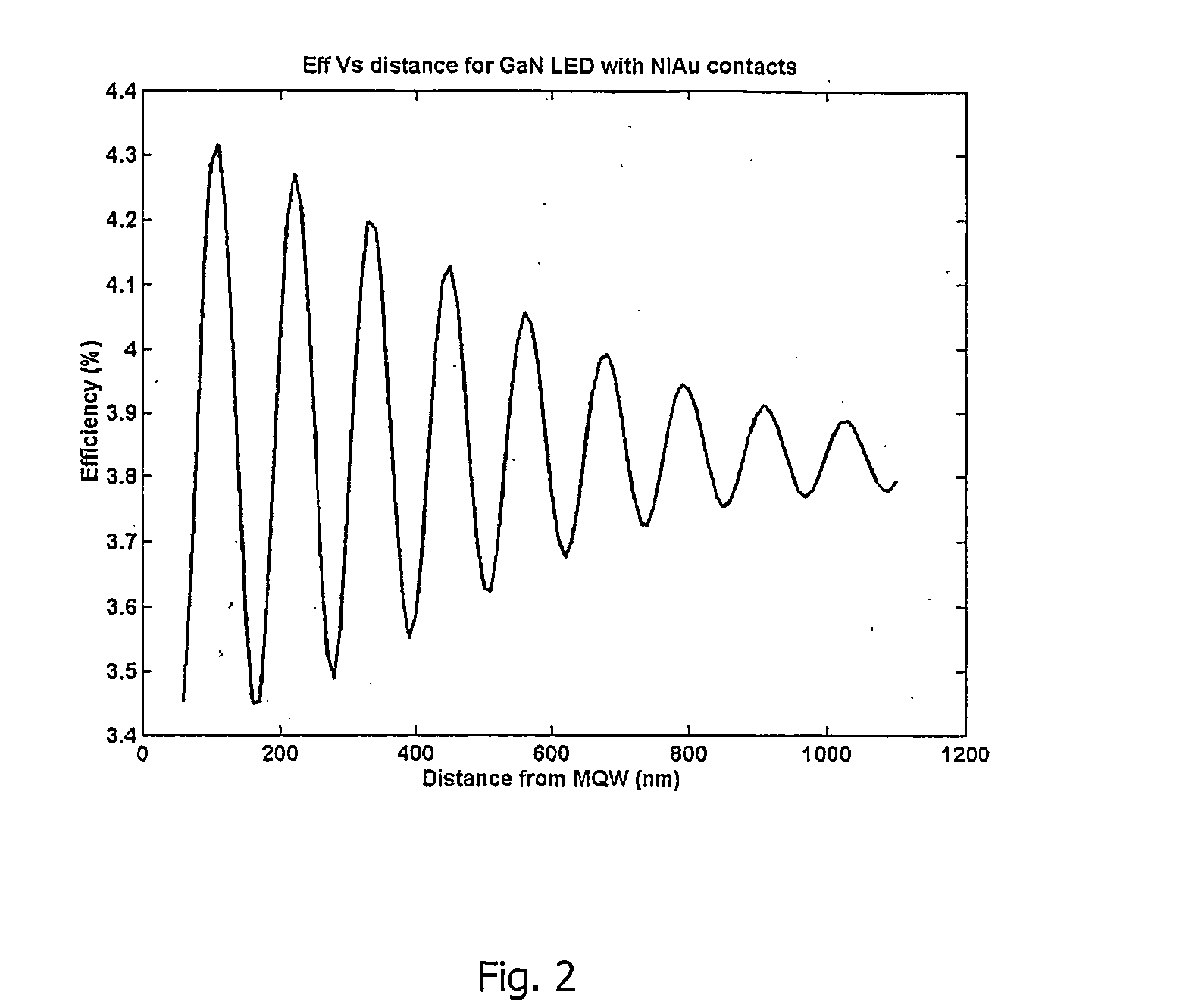Light emitting diode
a technology of light-emitting diodes and transmission windows, which is applied in the direction of solid-state devices, electric components, electric apparatuses, etc., can solve the problems of poor thermal stability, significant power reduction, and use of 650 nm transmission windows
- Summary
- Abstract
- Description
- Claims
- Application Information
AI Technical Summary
Problems solved by technology
Method used
Image
Examples
Embodiment Construction
[0037]FIG. 1 is a general schematic representation of a simple embodiment of a high-speed green LED 1. The LED 1 comprises a substrate material 11, a bottom confining layer 12 of GaN heavily n-doped, an active region 13 comprising of an InxGa(1-x)N / GaN quantum well or wells whose spontaneous emission wavelength at room temperature is in the vicinity of either 510 or 570 nm, an upper GaN confinement layer 14 heavily n-doped, and a semi-transparent Ohmic contact layer 15. An Ohmic contact 16 is made to the layer 12 following the patterning and etching of the layers 12, 13 and 14.
[0038] The LED 1 may alternatively be operated embedded in a polymer material as is commonly the case in LED packaging processes, or free standing within an ambient atmosphere.
[0039] At the schematic level of FIG. 1, the LED 1 is generally similar to prior art nitride LEDs. However, it includes various advantageous features as set out below.
[0040] The free carrier life-time within the LED is minimised while...
PUM
 Login to View More
Login to View More Abstract
Description
Claims
Application Information
 Login to View More
Login to View More - R&D
- Intellectual Property
- Life Sciences
- Materials
- Tech Scout
- Unparalleled Data Quality
- Higher Quality Content
- 60% Fewer Hallucinations
Browse by: Latest US Patents, China's latest patents, Technical Efficacy Thesaurus, Application Domain, Technology Topic, Popular Technical Reports.
© 2025 PatSnap. All rights reserved.Legal|Privacy policy|Modern Slavery Act Transparency Statement|Sitemap|About US| Contact US: help@patsnap.com



